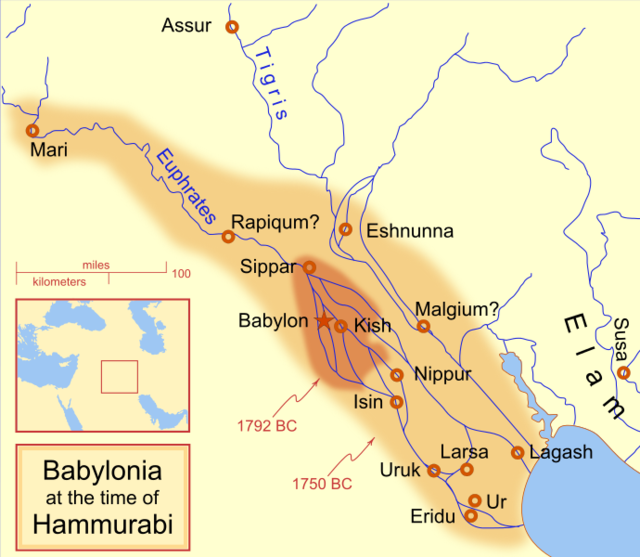
| MASHKAN-SHAPIR
Babylonia at the time of Hammurabi, c. 1792 - 1750 BC Mashkan-shapir (modern Tell Abu Duwari, Al Qadisyah Governorate, Iraq) was an ancient tell roughly 30 kilometres (19 mi) north of Nippur and around 90 miles (140 km) southeast of Baghdad. The city god of Mashkan-shapir was Nergal and a temple named Meslam dedicated to him was built there.
History
:
After rising to importance under the Larsa city-state, Mashkan-shapir became part of the Babylonian empire after the defeat of Larsa by Hammurabi following a long siege. At the time, Babylon and Larsa were engaged in a struggle for dominance in the region.
Note that the modern name of the site is in some doubt. Other possible names are Ishan Chebir and Tell Naim. The Tell Abu Duwari identification was the first and is used in archaeological publications.
Archaeology
:
Tell Abu Duwari was first noted, as site 639, in the Nippur survey of Robert McCormick Adams of the Oriental Institute at the University of Chicago. The site was excavated for a total of five months in three seasons between 1987 and 1990 by an American Schools of Oriental Research and National Geographic Society team led by Elizabeth Stone and Paul Zimansky. A key find was that of foundation deposits commemorating the city walls being built by Sin-Iddinam, which allowed the city to be identified. As part of the work, satellite images were taken and a complete surface-mapping was made using a kite lofted camera and coordinate markers.
Excavations at Mashkan-shapir ended with the invasion of Kuwait by Iraq in 1990, interrupting a planned long-term research program. Subsequently, the site has been heavily looted to the point where any further archaeological work would yield little results.
Source :
https://en.wikipedia.org/ |
